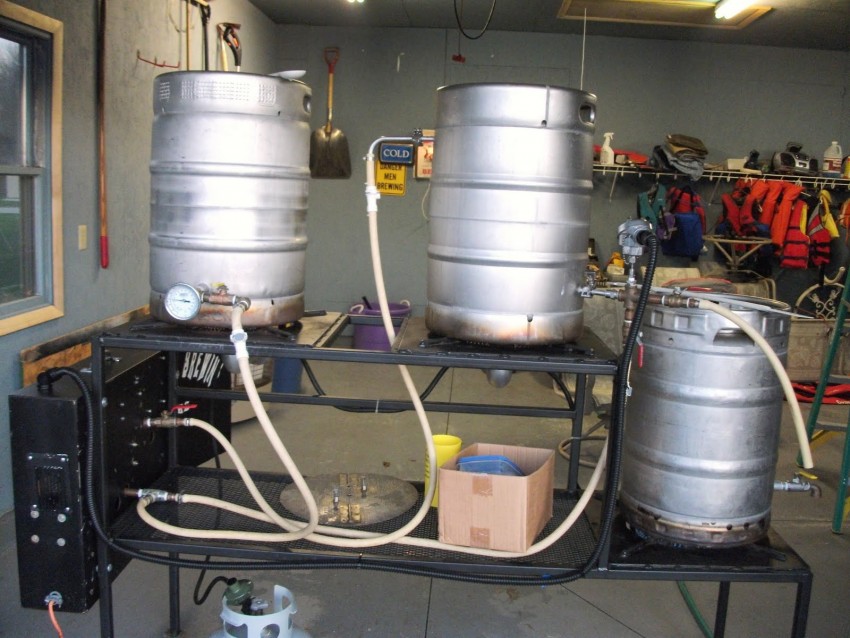Daire Collins | Deputy Features Editor
It’s now easier than ever to make your own home-brew beer. Online shopping has resulted in hundreds of speciality stores, supplying all types of equipment, kits and information for everyone from the uninformed beginner to the advanced sommelier. And there are so many sites that can help you on how to do it from home, if you are unsure on where to start then this is how to use home brewing equipment in the best way possible. For the beginners, introduction kits, with everything you need to brew and bottle can be bought from €80 upwards. As with most hobbies, you can dive in the deep end and spend thousands creating a copper barreled, microbrewery in your garage, yet even with the basics, the beer turns out surprisingly good. Those looking to start should make sure their kit includes; a fermenting barrel with grommeted hole for an airlock, a graduated cylinder and hydrometer for calculating the percentage, a tap for pouring and bottles for bottling, of course along with the actual ingredients for making the beer. On paper, with airlocks and hydrometers, it all sounds like it would lead to a steep learning curve, yet with the canned ingredients in starter kits, it’s almost impossible to go wrong. If you can work the hob you can make drinkable beer.
Moving on to my second batch, I realised how hard and how much preparation temperature control takes
Unexpectedly, my first brew was not perfect. I foolishly filled my fermentation barrel up with too much cold water, so that when I put my yeast in (the essential ingredient that creates the alcohol), it was way too cold and didn’t interact correctly. Even with this mammoth mistake, my first batch of Weiss Beer came in at a 3.9% alcohol and was quite drinkable, to most people’s surprise. This success out of disaster has spurred me on, to see what else is out there and to keep brewing. Moving on to my second batch, I realised how hard and how much preparation temperature control takes, as the yeast only works as it should within a certain range. I also realised, that even though costs can be kept low, as with every crafting hobby, there is the urge to upgrade and spend more. What should have been a second batch of beer, costing me €25 for the ingredients, resulted in purchasing a second barrel for bottling, extra tubing for siphoning and a bottle capper and caps. I’m currently waiting to taste the difference, but I know already that for batch number 3 a lot of restraint will be required not to purchase some other piece of equipment that soon appears ‘necessary’.
It turns out that home-brewing has a whole community surrounding the process of turning grains into tasty beer. The further you go down this rabbit hole, the less this beer is going to taste like the cans of Bav from the Pav, and the more you are going to start talking about hops and IPAs. However, for those less interested, the whole process of home brewing beer still can open your eyes to the world of possibilities when it comes to beer. Trying new beers, and having a favourite that’s not Heineken or God forbid, Carlsberg, is becoming the new norm and in my opinion rightly so. With just a little research, one realises there is so many options out there, for all occasions. And even with these options at your fingertips, there’s no need to be a snob. I would be first to admit, that in the right circumstances, shit beer becomes the shit. Nothing beats that first can, be it Tennents or Bavaria, on the cricket pitch in the height of ‘exam’ weather.
It’s a perfect way to beat the system, once you sink in those first set up costs, and manage to contain that urge to buy every possible piece of equipment, it can be quite cheap
Even within the college community, homebrewing is on the rise. Anecdotally speaking, many students are taking to putting out their own craft beers. It’s a perfect way to beat the system, once you sink in those first set up costs, and manage to contain that urge to buy every possible piece of equipment, it can be quite cheap. A ingredients kit costs about €20-25, with the possible need to add the cost of a bag of dextrose sugar at the end. This makes at least forty 500ml bottles of beer and costs about 8 hours of your time in total. So it may not be worth quitting your job and setting up a speakeasy, but if you’re interested in delving into some of the more unusual tastes of beer and learning about the processes behind the world’s most common inebriant of choice, home brewing should become a real possibility. If it you do, be sure to give me a shout and we can swap brews.







